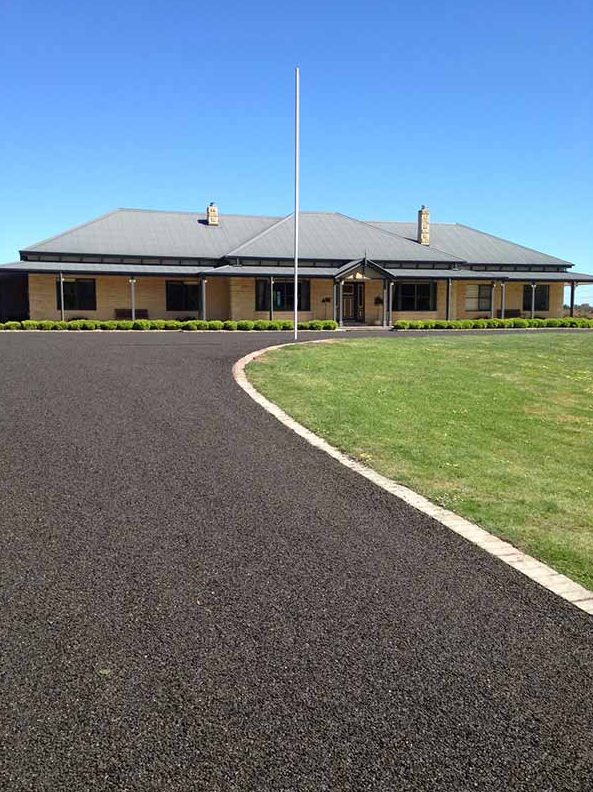Crumbling asphalt is more than just an eyesore—it’s a warning sign that your surface is failing from the inside out. Whether it’s a residential driveway, a commercial car park, or a private access road, once asphalt begins to break down, the damage tends to accelerate quickly.
At Ocean Shores Surfacing Solutions, we’ve worked with clients across Ocean Shores who are surprised by how quickly a once-solid surface can deteriorate. The good news? With the right understanding and action, the damage can be addressed and prevented in the future.
Why Asphalt Crumbles: The Underlying Causes
Surface wear is expected over time, but actual crumbling usually indicates deeper issues that weren’t dealt with during construction—or have developed due to environmental or usage conditions.
1. Water Infiltration
Water is the number one cause of asphalt degradation. When it seeps into cracks and penetrates the base layer, it weakens the foundation and begins to break the surface from below.
Common signs include:
- Cracks widening after rainfall
- Potholes forming in low spots
- Loss of surface smoothness and edge stability
Without proper drainage or sealing, even small amounts of moisture can lead to significant failure.
2. Poor Sub-Base Preparation
If the base under the asphalt wasn’t properly compacted or designed to handle the intended load, it will begin to shift or settle—causing the asphalt above to crack, lift, and crumble.
Symptoms of sub-base issues:
- Uneven surface or dips
- Soft spots that feel unstable underfoot
- Premature cracking in new installations
This is a common problem when corners are cut during initial construction or when the surface is laid over unsuitable ground.
3. UV and Oxidation Damage
The intense Australian sun, especially in coastal locations like Ocean Shores, contributes to the gradual breakdown of bitumen binders in the asphalt mix. Over time, this causes the surface to dry out, become brittle, and lose its ability to hold aggregate in place.
Look for:
- Fading or greying of the asphalt colour
- Loose stones or surface dust
- Cracking along high-traffic areas
UV degradation often starts the process, which is then made worse by traffic and weather exposure.
4. Heavy Loads and Traffic Stress
Not all asphalt is designed for high-volume or heavy-duty traffic. Repeated pressure from trucks, machinery, or delivery vehicles can lead to rutting, cracking, and surface fatigue.
Warning signs include:
- Deformation where tyres frequently travel
- Cracking at turning points or entrances
- Crumbling at the edges of the surface
Surface failure due to traffic stress is often preventable with the right thickness and materials specified from the start.
5. Lack of Maintenance and Sealing
Even the best-built asphalt surfaces require maintenance. When cracks are ignored and the surface isn’t periodically resealed, the structure begins to degrade more quickly.
Neglected surfaces may show:
- Rapid crack spread after rain
- Weed growth in openings
- Widespread crumbling within a short period
Regular sealing helps to preserve the waterproof barrier and maintain flexibility in the surface material.
How to Fix Crumbling Asphalt the Right Way
Fixing crumbling asphalt is more than just filling in holes. It involves identifying and addressing the root cause so the problem doesn’t return.
A professional repair approach should include:
- Assessment of sub-base stability
- Crack cleaning and sealing to stop water entry
- Removal and replacement of severely damaged sections
- Proper compaction and resurfacing to restore integrity
- Surface sealing or spray seal to protect from future UV and moisture damage
At Ocean Shores Surfacing Solutions, we assess every site with a long-term view—repairing damage and strengthening your surface for years to come.
Preventative Measures for Long-Term Durability
Once repaired, the best way to prevent future crumbling is through a combination of:
- Correct grading to manage drainage
- Scheduled inspections for early crack detection
- Appropriate material selection for traffic loads
- Routine surface sealing every few years
This is particularly important in areas like Ocean Shores, where weather exposure can be extreme and unpredictable.
Conclusion
Crumbling asphalt is often a sign of deeper issues that go beyond surface wear. Whether it’s due to poor drainage, base instability, or environmental stress, ignoring the warning signs will only lead to greater repair costs down the track. The key is to act early and fix it right.
For expert asphalt assessment and long-lasting repairs in Ocean Shores, contact Ocean Shores Surfacing Solutions. Our team specialises in high-performance asphalt and bitumen surfacing designed to stand up to real-world conditions—day in, day out.
Call us on: 07 3113 9392
Click here to find out more about Ocean Shores Surfacing Solutions
Click here to complete our contact form and see how we can help with your driveway needs.

